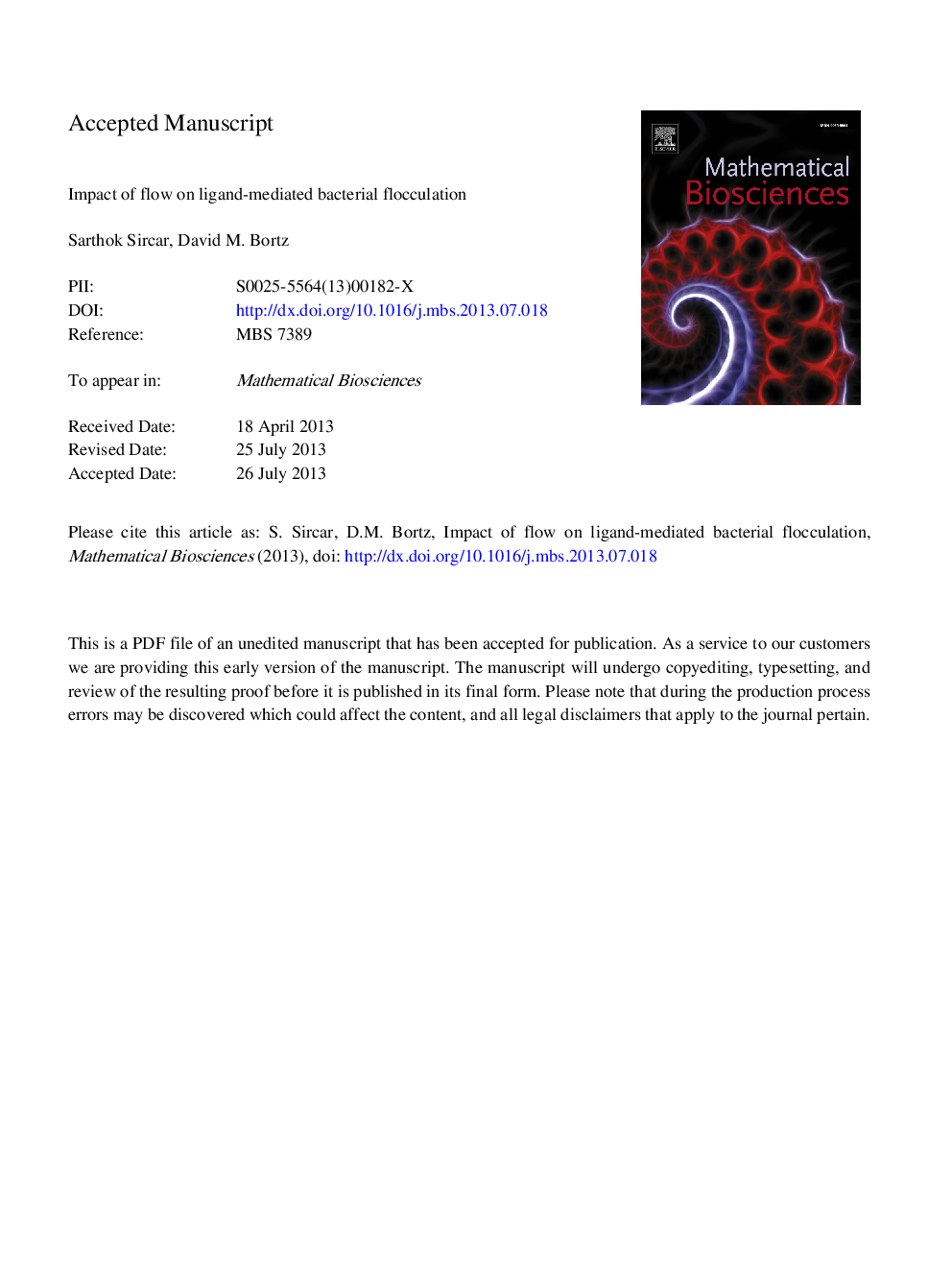| Article ID | Journal | Published Year | Pages | File Type |
|---|---|---|---|---|
| 6372113 | Mathematical Biosciences | 2013 | 19 Pages |
Abstract
To understand the adhesion-fragmentation dynamics of bacterial aggregates (i.e., flocs), we model the aggregates as two ligand-covered rigid spheres. We develop and investigate a model for the attachment/detachment dynamics in a fluid subject to a homogeneous planar shear-flow. The binding ligands on the surface of the flocs experience attractive and repulsive surface forces in an ionic medium and exhibit finite resistance to rotation (via bond tilting). For certain range of material and fluid parameters, our results predict a nonlinear or hysteretic relationship between the binding/unbinding of the floc surface and the net floc velocity (translational plus rotational velocity). We show that the surface adhesion is promoted by increased fluid flow until a critical value, beyond which the bonds starts to yield. Moreover, adhesion is not promoted in a medium with low ionic strength, or flocs with bigger size or higher binder stiffness. The numerical simulations of floc-aggregate number density studies support these findings.
Related Topics
Life Sciences
Agricultural and Biological Sciences
Agricultural and Biological Sciences (General)
Authors
Sarthok Sircar, David M. Bortz,
